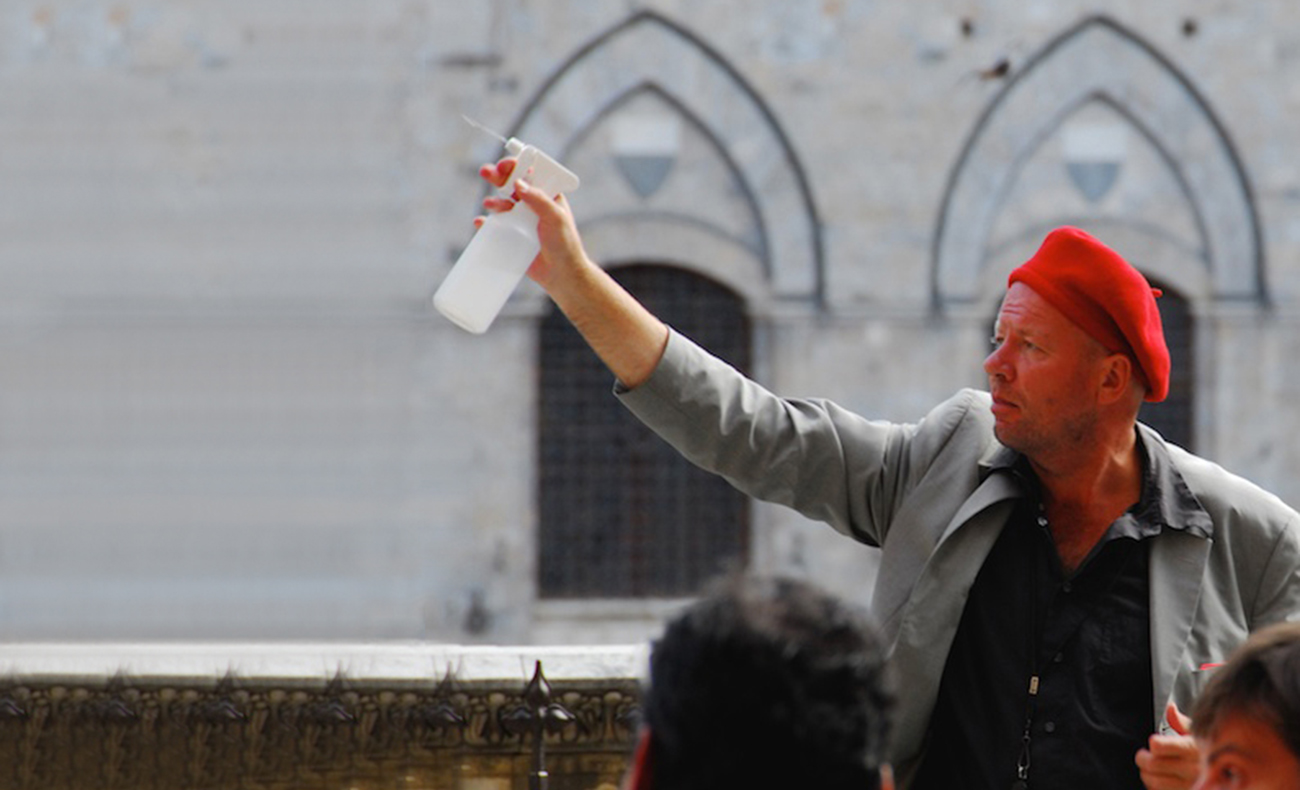
The Wisdom of Engaging by Intruding
July 22, 2013
Have you been watching traditional TV lately? Does showing me the same ad for ED in every show I watch through the day really engage me? Does watching an ad twice in a single commercial break make me pay more attention? In today’s world, does the notion of a “commercial break” continue to be relevant for how we really live?
I feel like I’m watching the very end of an era. The world of advertising and advertisers are struggling to hold onto the last vestige of the Mad Men era, when the consuming public has moved to a whole new way of engaging with brands and making purchase decisions.
Think about it. Traditional advertising works by intruding into the experience that audiences are enjoying. It forces targets to stop doing what they want to do and listen to what the advertiser has to say. And this is supposed to be engaging.
How much sense does that make? Let’s build engagement by bugging people, interrupting them, forcing them to listen to what we have to say and keeping them from what they really want to do.
Today, we’re much smarter about how our targets prefer to be engaged. Study upon study shows that targets – both b2c and b2b – move through a learning process where they talk with people they trust, do their homework on brand websites and review sites, consider expert opinions and then make their choices.
It’s all on their terms. They control the decision process and determine how and when they consume information. Engagement is built through learning and experiencing. The preferred media is the web and the preferred communication style is informational. If you can make the information a little entertaining, all the better.
This is buttressed through recent studies that show us that company websites and the opinions of category experts are the only two media people trust more than they distrust. All other media – advertising, email, collateral, etc. – are more distrusted than trusted.
Research does tell us that traditional advertising still has a role. It is a particularly strong validating tool, especially for people who have made big purchase decisions and for the employees of companies that advertise. However, traditional advertising’s role as a catalyst for shaping decisions is on the wane. Fewer and fewer customers cite advertising as one of the touch-points that shaped their decisions as they moved through the selection process.
Given this, it’s time for marketers, business leaders, consultants and agencies to be much smarter and more creative in building successful engagement programs. We need to disrupt the status quo and leverage the touch-points that customers actually prefer to use in navigating through their purchasing process.
We’ll be far better served by teaching rather than interrupting. We need to be there when customers want us rather than force them to pay attention to us when they would rather be doing something else. When you think about it, it’s fairly obvious – isn’t it?
Posted under: Branding Strategy, Changes in branding, Customer journey mapping, Demand Driving Strategy, General

The Power of a Challenger Mentality
May 6, 2013
I’ve been working for the past few months with some good friends who epitomize the spirit of a challenger mentality. These folks have examined every facet of their current industry and intimately understand where and how it must be transformed to serve clients better. They’re innovating new products and evangelizing the better way. In the process, they’re building momentum every day.
It’s exciting to be around them. They’re magnetic. Their zeal is infectious and their example is universal.
Earlier in my career, I had the chance to work in a truly challenger organization. We were much the same. We saw ourselves as liberators who could unleash clients through a better way. We transformed our industry through a combination of innovation and evangelism. Our purpose united us internally and our clients could feel it as they worked with us. The work we did then has met the test of time.
It is clear that approaching the market with a challenger mentality yields dramatic returns. Whether it be challenging the status quo in a product category, disrupting a market or transforming an entire industry, the firms that leveraged this perspective to drive innovation and liberate customers have been my most successful clients.
Challengers do important things better.
Challengers understand their markets from the inside out. They learn by working within the current paradigm. They delve deeply into how the current paradigm works. They understand the needs of customers and assess how well those needs are being served by the tools of the day.
They take the time to appreciate the points of pain. Challengers become the customer’s champion. They understand the flaws in the current paradigm and quantify the opportunities lost by imposing this pain on customers and prospects.
They use this understanding as a catalyst for innovation. What makes challengers special is their capacity to use this insight as the foundation for transformative innovation that liberates customers from the flaws of the existing paradigm.
They evangelize – inside and out. Unfortunately, customers often don’t realize that they’re being underserved. Inertia is a very powerful impediment to progress. Challengers seize the bully pulpit – first internally to turn their people into believers and then externally to help those underserved to appreciate that there is a better way.
They encourage early adopters. Challengers understand the process of influence within their marketplace. They seek out and convert the influencers, analysts and early adopters and then leverage these thought leaders to build credibility with the masses.
They progressively innovate. Challengers don’t stop there. They hone as they learn. There is no one and done. They use their disruption skills to disrupt the new paradigm they’ve created to better serve the evolving needs of their customers.
They challenge themselves. The most successful challengers remain challengers. Challengers never let themselves believe that they’ve achieved their ultimate goal. It’s never truly finished. It can be made better and will likely need to be transformed again and again to keep pace with the ever evolving needs of the marketplace.
Sadly, once a challenger begins to think of itself as a leader, the things that made it successful begin to fade away.
Where a challenger is always open to a new and better ways, leaders often comfort themselves with the notion that they’ve found the answer.
Where a challenger is always listening for those attempting to disrupt the new paradigm they’ve shaped, leaders often become insular and haughty, dismissing any potential threat as meaningless.
Where challengers attract the most agile and talented the market has to offer, leaders begin to draw those who are comforted by the safety of the successful status quo.
In the end, the challenger shapes and reshapes the industry while the leader basks in the momentary and fleeting glow of success.
I’m just on my way home from spending a week with the firm that embodies the power of the challenger. What a wonderful way to make a living.
Posted under: General

Branding sure has changed
January 14, 2013
Today, branding matters more than ever. But, the nature of branding has changed dramatically in recent years.
In the course of helping my good friend Jim Little create a “Ted” style presentation, we explored the ways that brand has changed over the years we’d been working together. These are the seven most significant ways that branding today has evolved to better drive demand.
1. It’s about relevance, not just awareness
We know that today people are crazy busy and besieged with messages wherever they turn. To pierce this clutter and get people to notice what we have to say we must speak directly to their needs. If people see our relevance, they’ll be actively aware of our existence. Without relevance, the best we can hope for is passive awareness, which can make us feel good, but won’t generate any meaningful economic value for our firms.
2. It’s about performance, not just positioning
It’s important for us to engage our targets with a meaningful promise. But, people today have no time for empty promises. We need to deliver exactly what we promise or they will turn to an alternative faster than we can say “good bye.”
3. It’s about dialogue, not monologue
Gone are the days when we could stand at the top of the mountain and shout at everyone we could afford to reach. Credibility is no longer simply a function of visibility. People today want to interact with our brands the way they would communicate in the course of any relationship. We need to relate to our targets in a meaningful way, interacting and responding to their needs, as the relationship requires.
4. It’s more about earned media than traditional advertising
Advertising still has its place, but we need to rebuild people’s trust in the medium. People trust what others say about us more than what we have to say. We need to be able to tap all of the new media sources available to give people the opportunity and the venue to open a dialogue with and about our brand. This will build their confidence in their learning and help them to make better decisions about forming a relationship with our brand.
5. It’s about retention, not just acquisition
It’s very important that we not only win business, but that we win our customer’s love and keep it. They’ll be loyal to us and will share their good feelings with those that they influence. We’ll grow our business and our brand on the basis of the security of these relationships and the new demand they help to generate.
6. It’s about advocacy, not just intention to purchase
This means there’s a big change in what we need to measure to ensure we’re being successful. When I started, the magic number was intent to purchase. Today, that’s just the beginning. Now, the most important variable is the degree to which people are willing to be an advocate for our brand to others.
7. It’s about informing and teaching, not selling
The most profound shift I’ve seen over the years is in how we communicate. People today are actively involved in decision making about brands. They seek the information they need to make better decisions and are turned off by “selling.” The brands that recognize this fundamental shift are going to be way more successful than those who don’t. In the sell, inform, solve continuum, inform is now the most important function. If we inform well, our clients will sell and solve for themselves.
So there you have it. As you can see branding has changed quite dramatically, but for the better. A brand today is all about the relationship. Managing a brand today comes down to understanding the fundamental rules around how people want you to behave within that relationship. Following these rules enables us to build strong, rich relationships that build mutual value and the spur the growth needed for our businesses to thrive.
Who knew that I would have been better off with a degree in psychology than marketing.
Posted under: Branding Strategy, Changes in branding, Demand Driving Strategy, General